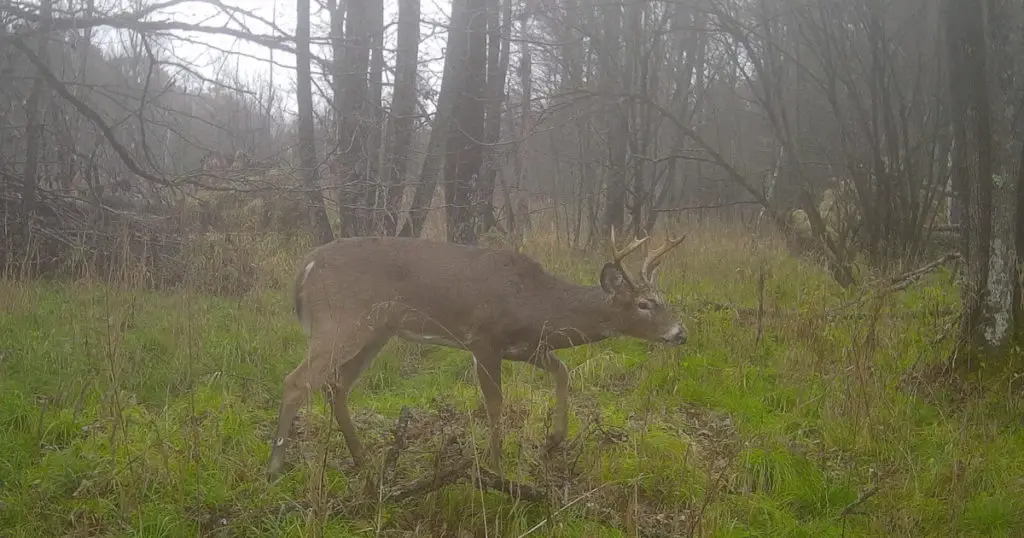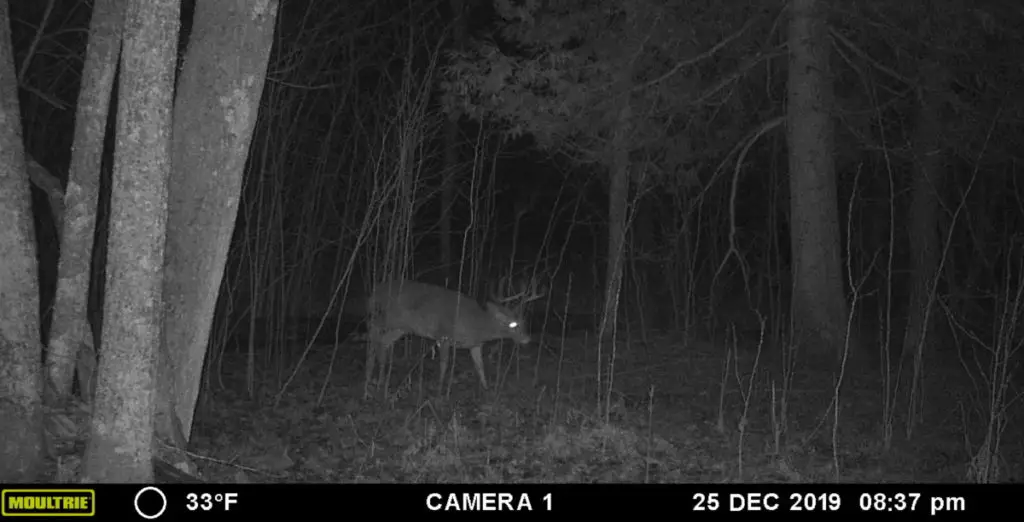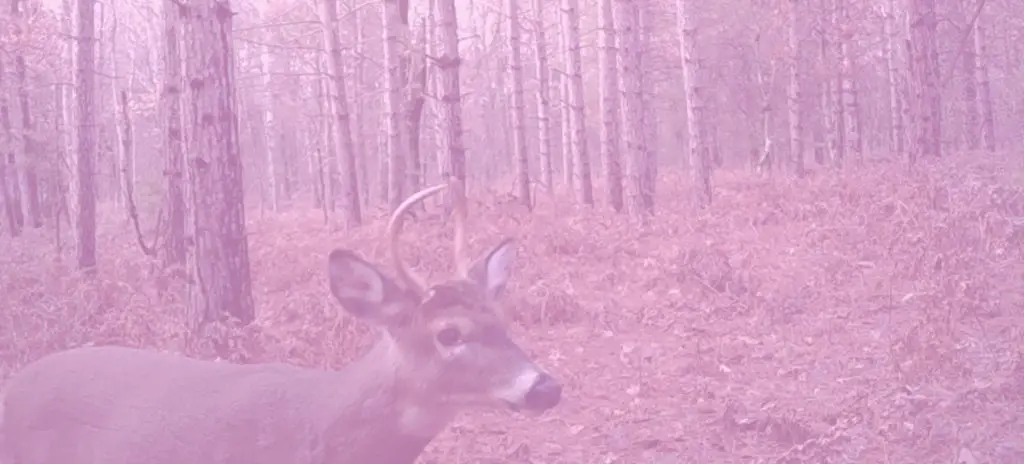Seemingly every year there is new technology that is integrated into trail cameras. This evolving technology keeps the market of trail cameras from becoming stale, and allows the consumer to reap the benefits of a competitive industry.
From the movement of film cameras to digital, to the integration of video mode, and onto the cellular trail camera market, the ever evolving technology continues to make trail cameras more reliable, easier to use, and increases the quality of the end product.
In 2019 a new technology that hit the market was the dual lens trail camera.
A dual lens trail camera is a trail camera that has a designated lens for day time photos, and a designated lens for nighttime photos. This creates better quality night time photos as well as a virtually silent trail camera.
As someone who nerds out over the advancement of trail camera technology, the integrated process of adding a second lens to the trail camera, not only made sense, in a practical matter, but I found that the addition added better quality to the end results.
To many, this addition might have been seen as a gimmick, similar to the panoramic trail cameras, but the addition of the second lens on the trail camera, added quality in both photos and video, as well as eliminated unnecessary mechanical movements, eliminating noise from the camera, an advancement that all trail camera users can appreciate.
Photo Quality
When it comes to photo quality of trail cameras, there is a lot of technology that is wrapped up into a short fraction of a second. From exposure tables, to native resolution to interpolation, there is a lot of tweaking that occurs in order to produce a quality photo. But nothing has added as much to the quality as adding a second lens to the camera.

Fixed Aperture
In order to take a quality photo there are three basic adjustments that are required: ISO, Shutter Speed, and Aperture. All three work together in an attempt to take a photo with the best possible exposure.
The ISO is an adjustment that is made to allow the image sensor on the back end of the camera to be more sensitive to light. When taking photos that have less less light in the surrounding area, the ISO will be turned up in order to capture more light in the photo. The alternative affect to being more sensitive to light, is that the ISO creates noise, otherwise known as grain in the photo.
The shutter speed is used to capture the movement of photos. The faster the shutter, the better it is equipped to take action photos. As you can imagine, the faster the shutter speed is, the less amount of light that is allowed into the photo through the lens. A longer shutter speed will allow more time to capture light, but the result of a slower shutter is the motion blur. In trail cameras, where animals tend to move quickly, a faster shutter speed is required to eliminate the motion blur.
Both the Shutter Speed and the ISO are able to be adjusted on the back end of the trail camera in what is known as the exposure tables. We are not going to spend much time on these two factors, as we have an incredible resource on how trail cameras work, that is definitely worth checking out.
The final aspect of the trilogy of proper exposure in a trail camera is what is known as the aperture. The aperture is where having dual lens technology on a trail camera, really makes the difference.
In photography the aperture is what sets the depth of field. Similar to the pupil of an eye, the smaller the aperture is the larger the depth of field. This is very important in taking pictures of the expansive woods. As animals are unpredictable, they can come within feet of the trail camera, or can be 40 yards away. Having a deep depth of field allows the camera to take a clear photo no matter where the animal is in the field of view.
Having a deep depth of field however allows less light that is able to make it to the image sensor of the camera. The less light, the darker the photos will appear. While during day time photos this is not too much of an issue, as the available light in the surrounding area, is enough to keep a properly exposed photo. During nighttime photos, this is where the problem begins to occur.
Trail camera lenses have a fixed aperture, meaning the depth of field for the daytime photos is the same as the nighttime photos. While the photos during daytime are properly exposed, the depth of field at night, does not need to be as deep, creating less light into the photo. This is when the designated lens for nighttime photos becomes important.

The depth of the photo during nighttime does not need to be any deeper than the distance the artificial flash. The aperture for the second lens is set to match the maximum depth needed, allowing the aperture to be larger, allowing more light into the image sensor.
The more light the aperture allows into the image sensor the faster the shutter speed can be and the less ISO that needs to be used. This will result in less motion blur, and more clear vibrant nighttime photos.
Silent Operation
The other aspect of using a single lens trail camera is the sound that it makes. While the noise is very slight, it is made, and can be audible, especially to deer and bear. The cause of the sound is the mechanical movement of an IR filter that is dropped in front of the lens during nighttime photos.
During nighttime photos, cameras enact an artificial light known as the flash. The flash is an infrared light that is above the light spectrum that we are able to see. More importantly it is above the light spectrum that the camera lens is able to pick up. In order for a single lens to absorb this light, it needs an IR filter. When the filter drops in front of the lens, this movement often causes a noise.
With dual lens trail cameras, the IR filter is already placed in front of the designated nighttime lens, eliminating any movement, and thus making the trail camera silent.
Pink Photos

It is possible with a single lens trail camera you have at one point or another captured a photo that has a pink grain. That pink grain is caused by the IR filter of the camera being stuck down in front of the lens. Sometimes this happens for only a few photos and then goes back to normal. Other times it could be an entire SD card filled with pink day time photos.
With a dual lens trail camera, there will never be a mechanical error in the IR filter being stuck down. The camera will just simply use the lens that is designated for daytime photos.
Conversely, you might sometimes get photos at night that are completely black. This is the cause of the IR filter not dropping in front of the lens. Again, having a dual lens camera will eliminate this problem.
Quality Dual Lens Trail Cameras
There are a handful of dual lens trail cameras on the market. As with all trail cameras, there is a difference in quality from model to model, and between manufacturers. At this point, the best quality and most versatile dual lens trail camera on the market that we have found is the Browning Patriot.
While the Browning Patriot comes with an MSRP of $199, it is packed full of great features including a Full HD 1080p video resolution that films at an incredible 60 frames per second. While we are still in an in depth review of this camera, I can assure you that the early results are proving to be one of the best trail cameras on the market.
If you are in looking for a slightly more economically friendly dual lens trail camera, the Alpha Cam No Glow, is a solid choice. This camera gives you a true dual lens camera, that is equipped with dual image sensors. While the video mode, and trigger speed are not quite the same as the Patriot, you are still getting a quality camera under $100.

